|
Under Construction! |
|
Under Construction! |
|
Sabar
Other Wolof drums
Senegalese
drums |
| Tama ji: The Wolof talking drum distinguished from other talking drums in West Africa by use of a lizard skin at each end.A talking drumHeld under the arm of the drummer, The tama changes pitch when squeezed imitating the tones of speech. It is played with a hammer shaped curved stick (galan bi) with one hand, and the other hand bare. Often included in a sabar ensemble. It is traditionally used to communicate news or to send messages, from one place to another. Links | Ndënd mi: Large ovoid drum with a closed bottom. Similar to the goroŋ except bigger and deeper. | Tabala ji: A set of three to five tuned wooden kettle drums. Each drum is carved from a log and covered with a cow hide, which is laced to an iron ring and tightened with wedges. Each drummer plays with one hand and one stick, except for the lead drummer, who plays a massive bass drum, using two sticks about as thick as broom handles. Originally of Mauritanian origin it has been adopted by the Wolof belonging to Qadiriyya Sufi brotherhood for use in their ceremonial music. |
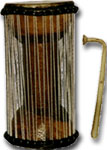 |
| Njembe ji: Open ended drum played with two hands, common throughout West Africa. | Junjuŋ bi (2): Largest of a family of 3 cylindrical double-headed bass drums of the Sereer, carved from solid Dimba log and covered with a cow skin. It is played with a wooden club. The other two are called sangba (medium size approximately 30 cms) and kenkeni (smallest approximately 25 cms). The junjuŋ is commonly added to njembe ensembles. They are often played with a bell tied at one end which is struck with a small metal wand in one hand, the heavy club of the bass drum being in the other. The kenkeni has a punchy yet resonate bass note. The sangba has a medium range bass note. |
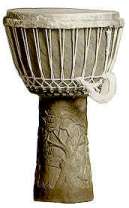 |
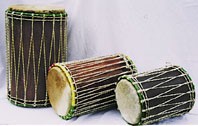 |
| bàkk tulli soxore mbalax rāndaŋ telec |
play the drums in honour of somebody play the drums to accompany another tambour battant Wolof rhythm roll of a drum to drum on a calabash |
tulli tëgg riij sàjj sabar si |
play a solo play a drum play the drums quietly the first few bars on the drums dance session accompanied by drums |
| Xalam mi: This is the Wolof lute usually with five strings. The body is a hollowed-out, canoe-shaped piece of wood with dried animal skin stretched over it like a drum. The neck is a fretless length of doweling that inserts into the body. The xalam's strings (which are made of thin fishing line) are lashed to the neck with movable strips of leather, and then fed over a fan-shaped bridge at the far end of the body. The string closest to the player produces the highest pitch, and the player plucks it with his thumb. Cora Connection have more details on the xalam (called ngoni in Mali). |
Kooraa bi: The Kora is a 21-stringed harp lute that originated in the Gambia River valley with the Mandinka but is one of the most popular instruments in Senegal. For technical details of the kora, Cora Connection can't be bettered. |
Riiti gi: The one string violin of the Fulbe. | ||||
 |
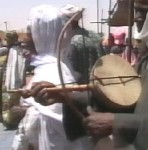 |
|||||
| Baliñe bi: The balaphone is made of 17–21 rectangular wooden slats laid on a frame and arranged from low to high notes. Two rows of small gourds, secured beneath the wooden slats, act as natural amplifiers. It is struck with mallots. See Cora Connection for a great article on the balaphone. | Liit gi or toxoro gi: the flute of the Fula | Mbongo or bolon: African bass harp normally with 3 strings. It was used by the Malinke to lead soldiers into battle. Its resonating gourd can be used as a drum and a kesingkesing-like plate attached to its neck at the tip of the pillar shakes and rattles as the player plucks the strings. | 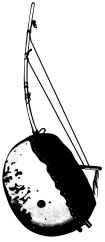 |
|||
 |
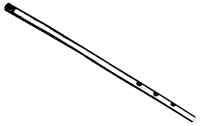 |
|||||
| keseŋ-keseŋ bi: Vibrating djembe sound enhancer that is affixed to the drum using rope, in form of two or three metal plates surrounded by little rings around the outher edge and mounted at three, nine, and/or twelve o'clock around the rim. | tëllëj gi: resonator made from a calabash with holes at each extremity. | mbiib: trumpet | ||||
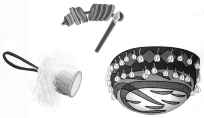
|
||||||
Other Wolof terms relating to music
| dëbbe baaral fent awukat bi awu |
strike up a song to sing to oneself to compose a song accompanist to accompany |
pelo mi dalinu woy wi bufta bi |
melody rhyme ? type of wind instrument |